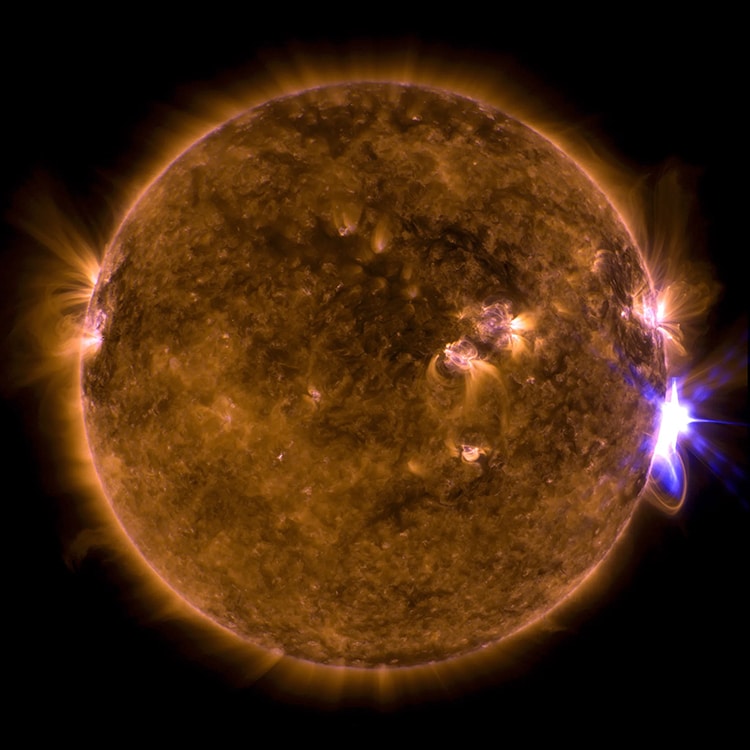Sun Erupts With the Largest Solar Flares Seen in Years

NASA’s Solar Dynamics Observatory captures the flare on December 14, 2023. (Photo: NASA/SDO)
NASA watches the universe and reports back on the amazing phenomena it witnesses with its incredible array of telescopes, cameras, and sensors. On December 14, 2023, NASA captured something spectacular and beautiful from their Solar Dynamics Observatory (SDO). SDO is part of NASA's Living With a Star (LWS) Program. The craft studies the Sun's magnetic field from its specially crafted orbit that always keeps the Sun in view. On the 14th, the SDO captured an impressive solar flare striking out from the surface of the star—the biggest flare since one recorded in September 2017.
The December 2023 flare emerged from AR 3514, an active sunspot visible on the solar surface. The solar flare is categorized as an X2.8 type. This is the most intense of five flare categories. It was a release of electromagnetic radiation, what NASA calls “our solar system’s largest explosive events.” It was not directed squarely at Earth, and therefore only caused a radio black out for a short period in South America.
The flare was accompanied by a coronal mass ejection. Dr. Kate Brand told Cosmos Magazine, “During a coronal mass ejection (CME), billions of tonnes of magnetized solar plasma erupt into space at speeds up to 3,000 km/s. If the material is directed towards the Earth, geomagnetic and ionospheric storms can occur. Both can significantly disrupt technology in the near-Earth space environment.” She added, “Solar flares do not cause coronal mass ejections, but a coronal mass ejection may (or may not be) associated with a solar flare.”
CMEs can cause auroras on Earth. “A CME arrival earlier on 17 December is likely to bring some further minor enhancement to the auroral oval,” according to the UK Met Office. Earlier this week, Scotland, Northern Ireland, northern England and similar locations were expected to get a glimpse of some auroras. “The peak in auroral activity for the coming three-day period is likely to be overnight 18-19 Dec, resulting from the onset of the fast wind from a coronal hole.” Viewers as far south as Boston were also forecasted to glimpse a peek. Now, the UK Met Office predicts, “A stream of fast winds from a coronal hole may arrive at Earth late on 21 or on 22 Dec, perhaps increasing the chance of visible aurora across the far north of Scotland and similar latitudes.”
For anyone who doesn’t have the opportunity or missed the chance to see the lights dance across the sky, NASA's incredible imagery of the flare is equally impressive.
On December 14, 2023, powerful solar flares were seen, the likes of which have been unrivaled since the spectacular solar show of 2017.

The September 10, 2017 flare. (Photo: NASA/SDO/Goddard)
h/t: [Science Alert]
Related Articles:
Immense Power of the Sun Visually Explored Through Solar Flares
NASA Lets You Download Thousands of High-Resolution Space Images for Free
NASA Sun Mission Photographs Fiery Solar Eclipse From Space
Shimmering Sun Sculpture Gives Illusion of Warmth in Calgary
READ: Sun Erupts With the Largest Solar Flares Seen in Years
0 Commentaires